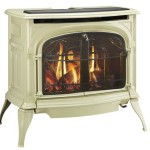How To Decorate a Living Room With No Fireplace
The living room often serves as a central gathering space within a home. Traditionally, fireplaces acted as focal points, drawing the eye and providing a natural anchor for furniture arrangement. However, many modern homes lack this feature, presenting a unique decorating challenge. Creating a visually appealing and functional living room without a fireplace requires careful consideration of alternative focal points, strategic furniture placement, and the incorporation of textures and colors that enhance the overall aesthetic.
Establishing an Alternative Focal Point
In the absence of a fireplace, establishing a compelling alternative focal point is paramount. This singular element will act as the visual anchor for the room, guiding furniture placement and decorative choices. Several options can be employed to achieve this, each offering distinct advantages depending on individual preferences and the existing architectural style of the living room.
Large-Scale Artwork: A substantial piece of art, whether a painting, a sculpture, or a curated gallery wall, can effectively command attention. The artwork should be proportionate to the size of the wall it occupies and visually interesting enough to draw the eye. Consider the color palette of the artwork and its relationship to the existing color scheme of the room. A bold, contrasting piece can create a dramatic effect, while a more subdued artwork can complement a minimalist design.
The placement of the artwork is crucial. Position it at eye level, typically around 60 inches from the floor to the center of the piece. When creating a gallery wall, ensure there is consistent spacing between each piece. Balance is also key; aim for a visually harmonious arrangement that doesn't feel cluttered or unbalanced.
Entertainment Unit: In contemporary living rooms, the television often serves as a gathering point. To elevate this function, consider investing in a well-designed entertainment unit that incorporates storage, display shelves, and integrated lighting. A custom-built unit can be tailored to the specific dimensions of the wall and the storage needs of the occupants.
When selecting an entertainment unit, prioritize functionality and aesthetics. Choose a unit that complements the overall style of the room. Minimalist designs with clean lines are well-suited to modern interiors, while more ornate units can enhance traditional settings. The size of the television should be proportionate to the viewing distance. Avoid overwhelming the space with an excessively large screen.
Statement Furniture Piece: A unique or unusually designed piece of furniture, such as a bold sofa, a striking armchair, or a decorative console table, can effectively serve as a focal point. The chosen piece should be visually distinct and intentionally positioned to draw attention. The color, material, and style of the furniture should complement the overall design scheme of the room.
When selecting a statement furniture piece, consider the surrounding elements. Ensure that the piece integrates seamlessly with the existing furniture and décor. Avoid overcrowding the space with too many competing focal points. The goal is to create a single, eye-catching element that enhances the overall aesthetic of the living room.
Large Window with a View: If the living room boasts a large window with a captivating view, take advantage of this natural asset. Frame the window with strategically placed curtains or blinds that enhance the view without obstructing natural light. Position furniture to maximize the view and create a comfortable seating area that encourages relaxation and enjoyment of the scenery.
Consider the orientation of the window and the amount of sunlight it receives. South-facing windows tend to receive the most sunlight, while north-facing windows receive the least. Adjust the window treatments accordingly to control the amount of light entering the room. Sheer curtains can diffuse harsh sunlight, while blackout curtains can provide privacy and block out light when needed.
Strategic Furniture Arrangement and Spatial Planning
Once a focal point has been established, the furniture arrangement should be carefully planned to create a cohesive and functional living space. The layout should encourage conversation, facilitate movement, and maximize the available space. Consider the size and shape of the room, the placement of doorways and windows, and the desired flow of traffic.
Anchor Furniture to the Focal Point: Direct the placement of the furniture to face the focal point. This creates a visual connection and reinforces the focal point's importance. For example, if a large-scale artwork is the focal point, position the sofa and armchairs to directly face the artwork.
Create Conversation Areas: Arrange furniture to facilitate conversation. Position sofas and armchairs facing each other to encourage interaction. Use coffee tables or ottomans to create a central gathering point. Avoid placing furniture against the walls, as this can make the room feel smaller and less inviting.
Define Zones Within the Room: If the living room is large, consider creating distinct zones for different activities. For example, a reading nook can be created with a comfortable armchair, a floor lamp, and a small side table. A work area can be defined with a desk and a chair. This helps to organize the space and makes it more functional.
Consider Traffic Flow: Ensure that there is adequate space for people to move freely through the room. Avoid placing furniture in pathways or blocking doorways. Create clear and unobstructed walkways to ensure a comfortable and functional living space.
Use Rugs to Define Space: Area rugs can be used to visually define different zones within the living room. Place a rug under the seating area to create a cohesive and inviting space. Choose a rug that complements the color scheme and style of the room. Ensure that the rug is large enough to accommodate all the furniture in the seating area.
Incorporating Texture, Color, and Lighting to Enhance Ambience
To create a visually appealing and inviting living room, it is essential to incorporate a variety of textures, colors, and lighting techniques. These elements can add depth, dimension, and personality to the space, creating a warm and welcoming atmosphere.
Layer Textures to Add Depth: Incorporate a variety of textures to create visual interest and add depth to the living room. Use different materials, such as velvet, linen, wool, and leather, to create a tactile experience. Layer throws and pillows on sofas and armchairs to add comfort and visual appeal. Incorporate textured rugs and wall hangings to further enhance the sense of depth.
Use Color Strategically to Create Mood: The color palette of the living room can significantly impact the overall mood and atmosphere. Choose colors that reflect personal preferences and complement the existing architectural style of the room. Light and airy colors can create a sense of spaciousness, while darker colors can create a more intimate and cozy atmosphere. Use accent colors to add pops of personality and visual interest.
Maximize Natural Light: Natural light is essential for creating a bright and welcoming living room. Maximize the amount of natural light entering the room by keeping windows clean and unobstructed. Use sheer curtains or blinds to diffuse harsh sunlight and provide privacy. Supplement natural light with artificial lighting to create a balanced and well-lit space.
Incorporate Different Lighting Layers: Use a combination of ambient, task, and accent lighting to create a layered and well-lit living room. Ambient lighting provides overall illumination for the room. Task lighting provides focused illumination for specific activities, such as reading or working. Accent lighting highlights specific features of the room, such as artwork or architectural details.
Add Greenery for a Touch of Nature: Introduce plants to the living room to add a touch of nature and create a sense of tranquility. Choose plants that thrive in the existing light conditions and complement the overall style of the room. Use a variety of plant sizes and shapes to create visual interest. Consider incorporating a vertical garden or a hanging planter to add a unique element to the space.
By strategically implementing these principles, it is possible to transform a living room without a fireplace into a stylish, functional, and inviting space that reflects personal taste and enhances the overall living experience.

11 Steps To A Cozy Room No Fireplace Needed Family Living Design Rooms With

Living Room Without Fireplace Cabinet A Custom Built In Media Creates Focal Point Remodel Livingroom Layout

11 Steps To A Cozy Room No Fireplace Needed Worthing Court Diy Home Decor Made Easy

Why A Focal Point Doesn T Always Need To Be Fireplace The Living House
Why A Focal Point Doesn T Always Need To Be Fireplace The Living House

11 Steps To A Cozy Room No Fireplace Needed Worthing Court Diy Home Decor Made Easy

Creating A Focal Point In Room With No Fireplace

12 Shapely Living Room Ideas No Fireplace Without Long Livingroom Layout

Creating A Focal Point In Room With No Fireplace

75 Beautiful Living Room With No Fireplace Ideas Designs December 2024 Houzz Au
Related Posts








